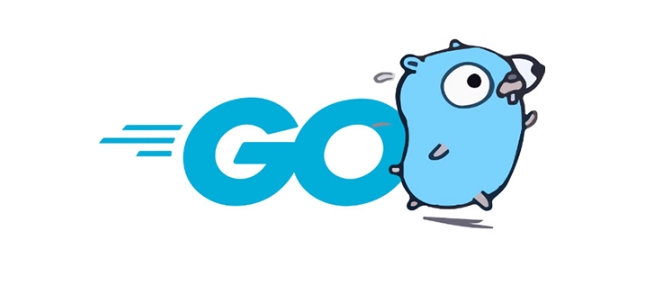The steps to write WebAssembly in Go and run it in the browser are as follows: 1. Install Go 1.15 and set GOOS=js and GOARCH=wasm for compilation; 2. Make sure the wasm_exec.js file exists and copy it to the project directory; 3. Write a Go program that only processes logic, such as output strings; 4. Use HTML to import wasm_exec.js and load and run the .wasm file through JavaScript; 5. Run the page through a local server to avoid cross-domain problems. Notes include performance overhead, debugging restrictions, dependency limitations, and browser compatibility issues.

Want to write WebAssembly in Go and run it in your browser? Actually it's not difficult, but some details are easy to get stuck. This article talks about how to start from writing code to running step by step.

Preparation: Installation environment
First, make sure your Go version is 1.15 or higher, because WebAssembly supports more stable starting from this version. You can check the current version with go version .
Next, you need to set up GOOS and GOARCH to let the Go compiler know that you are building the WebAssembly target file:

GOOS=js GOARCH=wasm go build -o main.wasm
However, before compiling, you must also confirm that the wasm_exec.js file under $GOROOT/misc/wasm exists. This is a JS glue file required to run WebAssembly. You can copy it to your project directory for later use.
Write a simple Go program
When WebAssembly runs in a browser, it cannot directly operate the DOM, so the Go code you write mainly does calculations, logical processing and other things. For example, the following example is to export a function and return a string:

package main
import "fmt"
func main() {
fmt.Println("Hello from Go WASM!")
} After compiling into a .wasm file, it can be loaded through HTML JavaScript.
How to load and run in HTML pages
To run the generated .wasm file, it is necessary to cooperate with HTML and JS. Here are the basic steps:
- Introduce
wasm_exec.js - Create a WebAssembly instance
- Load the
.wasmfile and run it
HTML example:
<!DOCTYPE html>
<html>
<head>
<meta charset="UTF-8">
<title>Go WASM</title>
</head>
<body>
<script src="wasm_exec.js"></script>
<script>
const go = new Go();
WebAssembly.instantiateStreaming(fetch('main.wasm'), go.importObject)
.then((result) => {
go.run(result.instance);
});
</script>
</body>
</html>Notice:
- Put
wasm_exec.jsandmain.wasmin the same directory - You need to run it with a local server (for example, use
python3 -m http.server). You cannot open the HTML file directly, otherwise you will report an error across the domain.
Frequently Asked Questions and Notes
- Performance is not omnipotent : Although WebAssembly performs well, frequent calls to interactions between JS and Go will be overhead.
- Debugging is a bit troublesome : Currently, Go's WASM debugging support is limited, so it is recommended to use
fmt.Printlnto output information more. - Dependency restrictions : Not all standard libraries can be used, such as network requests and file reading and writing functions, are limited by browser sandboxes.
- Browser compatibility : Mainstream browsers all support WASM, but different versions may vary. It is recommended to test mainstream modern browsers.
Basically that's it. Compiling Go to WebAssembly is not complicated, but be careful about its boundaries and limitations. If you just want to do some high-performance front-end logic processing, such as image processing, algorithm computing, etc., this path is quite appropriate.
The above is the detailed content of Go WebAssembly tutorial. For more information, please follow other related articles on the PHP Chinese website!

Hot AI Tools

Undress AI Tool
Undress images for free

Undresser.AI Undress
AI-powered app for creating realistic nude photos

AI Clothes Remover
Online AI tool for removing clothes from photos.

Clothoff.io
AI clothes remover

Video Face Swap
Swap faces in any video effortlessly with our completely free AI face swap tool!

Hot Article

Hot Tools

Notepad++7.3.1
Easy-to-use and free code editor

SublimeText3 Chinese version
Chinese version, very easy to use

Zend Studio 13.0.1
Powerful PHP integrated development environment

Dreamweaver CS6
Visual web development tools

SublimeText3 Mac version
God-level code editing software (SublimeText3)

Hot Topics
 What are the implications of Go's static linking by default?
Jun 19, 2025 am 01:08 AM
What are the implications of Go's static linking by default?
Jun 19, 2025 am 01:08 AM
Go compiles the program into a standalone binary by default, the main reason is static linking. 1. Simpler deployment: no additional installation of dependency libraries, can be run directly across Linux distributions; 2. Larger binary size: Including all dependencies causes file size to increase, but can be optimized through building flags or compression tools; 3. Higher predictability and security: avoid risks brought about by changes in external library versions and enhance stability; 4. Limited operation flexibility: cannot hot update of shared libraries, and recompile and deployment are required to fix dependency vulnerabilities. These features make Go suitable for CLI tools, microservices and other scenarios, but trade-offs are needed in environments where storage is restricted or relies on centralized management.
 How do I create a buffered channel in Go? (e.g., make(chan int, 10))
Jun 20, 2025 am 01:07 AM
How do I create a buffered channel in Go? (e.g., make(chan int, 10))
Jun 20, 2025 am 01:07 AM
To create a buffer channel in Go, just specify the capacity parameters in the make function. The buffer channel allows the sending operation to temporarily store data when there is no receiver, as long as the specified capacity is not exceeded. For example, ch:=make(chanint,10) creates a buffer channel that can store up to 10 integer values; unlike unbuffered channels, data will not be blocked immediately when sending, but the data will be temporarily stored in the buffer until it is taken away by the receiver; when using it, please note: 1. The capacity setting should be reasonable to avoid memory waste or frequent blocking; 2. The buffer needs to prevent memory problems from being accumulated indefinitely in the buffer; 3. The signal can be passed by the chanstruct{} type to save resources; common scenarios include controlling the number of concurrency, producer-consumer models and differentiation
 How does Go ensure memory safety without manual memory management like in C?
Jun 19, 2025 am 01:11 AM
How does Go ensure memory safety without manual memory management like in C?
Jun 19, 2025 am 01:11 AM
Goensuresmemorysafetywithoutmanualmanagementthroughautomaticgarbagecollection,nopointerarithmetic,safeconcurrency,andruntimechecks.First,Go’sgarbagecollectorautomaticallyreclaimsunusedmemory,preventingleaksanddanglingpointers.Second,itdisallowspointe
 How can you use Go for system programming tasks?
Jun 19, 2025 am 01:10 AM
How can you use Go for system programming tasks?
Jun 19, 2025 am 01:10 AM
Go is ideal for system programming because it combines the performance of compiled languages ??such as C with the ease of use and security of modern languages. 1. In terms of file and directory operations, Go's os package supports creation, deletion, renaming and checking whether files and directories exist. Use os.ReadFile to read the entire file in one line of code, which is suitable for writing backup scripts or log processing tools; 2. In terms of process management, the exec.Command function of the os/exec package can execute external commands, capture output, set environment variables, redirect input and output flows, and control process life cycles, which are suitable for automation tools and deployment scripts; 3. In terms of network and concurrency, the net package supports TCP/UDP programming, DNS query and original sets.
 What are functional options patterns in Go, and when are they useful for constructor design?
Jun 14, 2025 am 12:21 AM
What are functional options patterns in Go, and when are they useful for constructor design?
Jun 14, 2025 am 12:21 AM
FunctionaloptionsinGoareadesignpatternusedtocreateflexibleandmaintainableconstructorsforstructswithmanyoptionalparameters.Insteadofusinglongparameterlistsorconstructoroverloads,thispatternpassesfunctionsthatmodifythestruct'sconfiguration.Thefunctions
 How do I call a method on a struct instance in Go?
Jun 24, 2025 pm 03:17 PM
How do I call a method on a struct instance in Go?
Jun 24, 2025 pm 03:17 PM
In Go language, calling a structure method requires first defining the structure and the method that binds the receiver, and accessing it using a point number. After defining the structure Rectangle, the method can be declared through the value receiver or the pointer receiver; 1. Use the value receiver such as func(rRectangle)Area()int and directly call it through rect.Area(); 2. If you need to modify the structure, use the pointer receiver such as func(r*Rectangle)SetWidth(...), and Go will automatically handle the conversion of pointers and values; 3. When embedding the structure, the method of embedded structure will be improved, and it can be called directly through the outer structure; 4. Go does not need to force use getter/setter,
 What are interfaces in Go, and how do I define them?
Jun 22, 2025 pm 03:41 PM
What are interfaces in Go, and how do I define them?
Jun 22, 2025 pm 03:41 PM
In Go, an interface is a type that defines behavior without specifying implementation. An interface consists of method signatures, and any type that implements these methods automatically satisfy the interface. For example, if you define a Speaker interface that contains the Speak() method, all types that implement the method can be considered Speaker. Interfaces are suitable for writing common functions, abstract implementation details, and using mock objects in testing. Defining an interface uses the interface keyword and lists method signatures, without explicitly declaring the type to implement the interface. Common use cases include logs, formatting, abstractions of different databases or services, and notification systems. For example, both Dog and Robot types can implement Speak methods and pass them to the same Anno
 How do I use the io package to work with input and output streams in Go?
Jun 20, 2025 am 11:25 AM
How do I use the io package to work with input and output streams in Go?
Jun 20, 2025 am 11:25 AM
TheGoiopackageprovidesinterfaceslikeReaderandWritertohandleI/Ooperationsuniformlyacrosssources.1.io.Reader'sReadmethodenablesreadingfromvarioussourcessuchasfilesorHTTPresponses.2.io.Writer'sWritemethodfacilitateswritingtodestinationslikestandardoutpu






